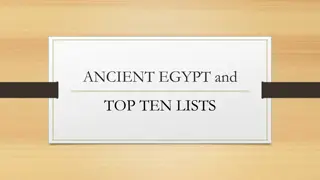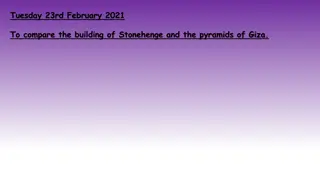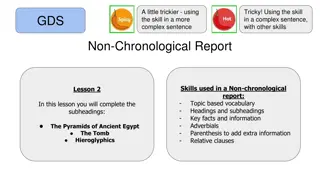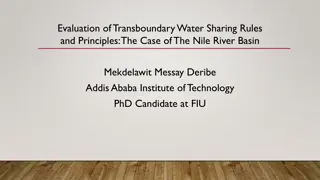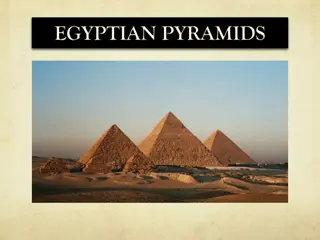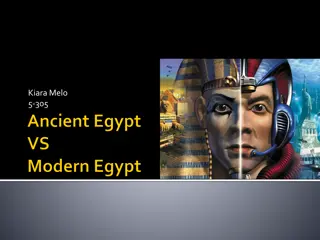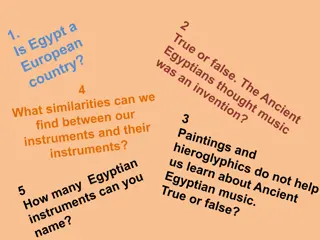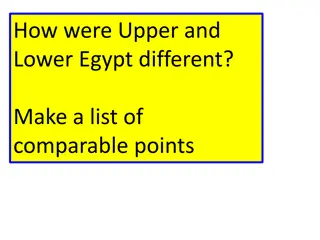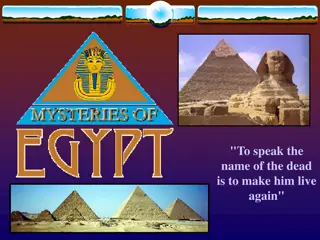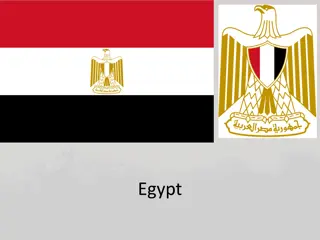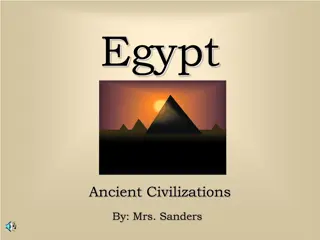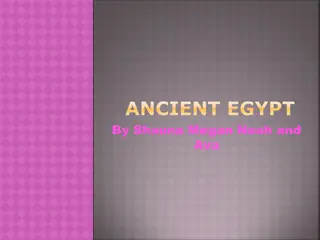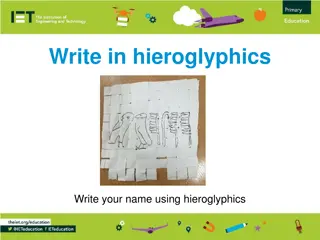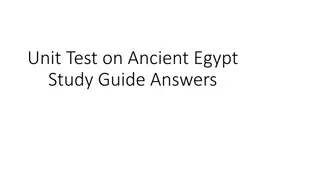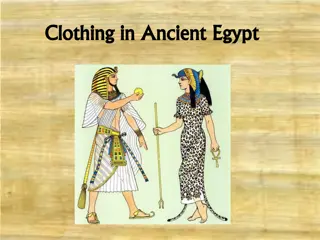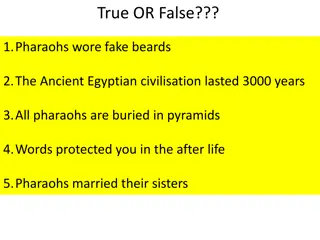Ancient Egypt: Nile River, Pharaohs, and Hieroglyphics
The Nile River, the longest river in the world, played a crucial role in the history of Ancient Egypt. Pharaohs ruled the land, with the Old Kingdom witnessing the construction of the Great Pyramids. The belief in the afterlife led to mummification practices, while hieroglyphics and papyrus were used for communication and record-keeping. Explore the rich history and culture of Ancient Egypt through its fascinating artifacts and traditions.
Download Presentation

Please find below an Image/Link to download the presentation.
The content on the website is provided AS IS for your information and personal use only. It may not be sold, licensed, or shared on other websites without obtaining consent from the author.If you encounter any issues during the download, it is possible that the publisher has removed the file from their server.
You are allowed to download the files provided on this website for personal or commercial use, subject to the condition that they are used lawfully. All files are the property of their respective owners.
The content on the website is provided AS IS for your information and personal use only. It may not be sold, licensed, or shared on other websites without obtaining consent from the author.
E N D
Presentation Transcript
Nile RiverThe Nile is the longest river in the world. It runs north through Egypt to the Mediterranean Sea, a distance of 4000 miles. Upper Egypt southern region of Egypt. It is located upriver in the relation to the Nile s flow. The Nile floods this region in mid-summer. Lower Egypt the northern region of Egypt. It is located downriver. The Nile floods this region in the fall.
Pharaoh the titles used by the rulers of ancient Egypt. Historians believe that Menes (MEE-neez) was the first pharaoh. Dynasty series of rulers from the same family
Old Kingdomperiod in Egyptian history that lasted for about 500 years from about 2700 to 2200 B.C. The Great Pyramids and the Sphinx were created during this time.
Nobles- -people from rich and powerful families Afterlife life after death. This belief in the afterlife came from their belief in ka (kah) Ka-- or a person s life force. The Egyptians believed that when a person died their ka would become a spirit. However, their ka was linked to their body therefore it could not leave the burial site. The ka needs all the same things as a living person therefore the Egyptians would fill tombs with clothing, furniture, tools, jewelry and weapons. Relatives would bring food and drink to the their loved one s tombs.
Mummification- method of embalming to preserve bodies. Egypt s royalty and elite were mummified.
Middle Kingdom-- period in Egyptian history from about 2050 to 1750 B.C. In the period Egypt becomes an international power by reconquering Nubia and expanding trade routes. New Kingdom-- period in Egyptian history from about 1550 to 1050 B.C. This was also the period that Egypt reached the height of its power and glory.
Hieroglyphics system of writing that used pictures to represent sounds or words.
Papyrus long-lasting paper-like material made from reeds; used to write on.
Rosetta Stone stone slab inscribed with hieroglyphics. It was discovered in 1799 by a French soldier. It allowed historians to be able to read the Egyptian hieroglyphics.


![[PDF⚡READ❤ONLINE] Tutankhamun's Trumpet: Ancient Egypt in 100 Objects from the](/thumb/20549/pdf-read-online-tutankhamun-s-trumpet-ancient-egypt-in-100-objects-from-the.jpg)
